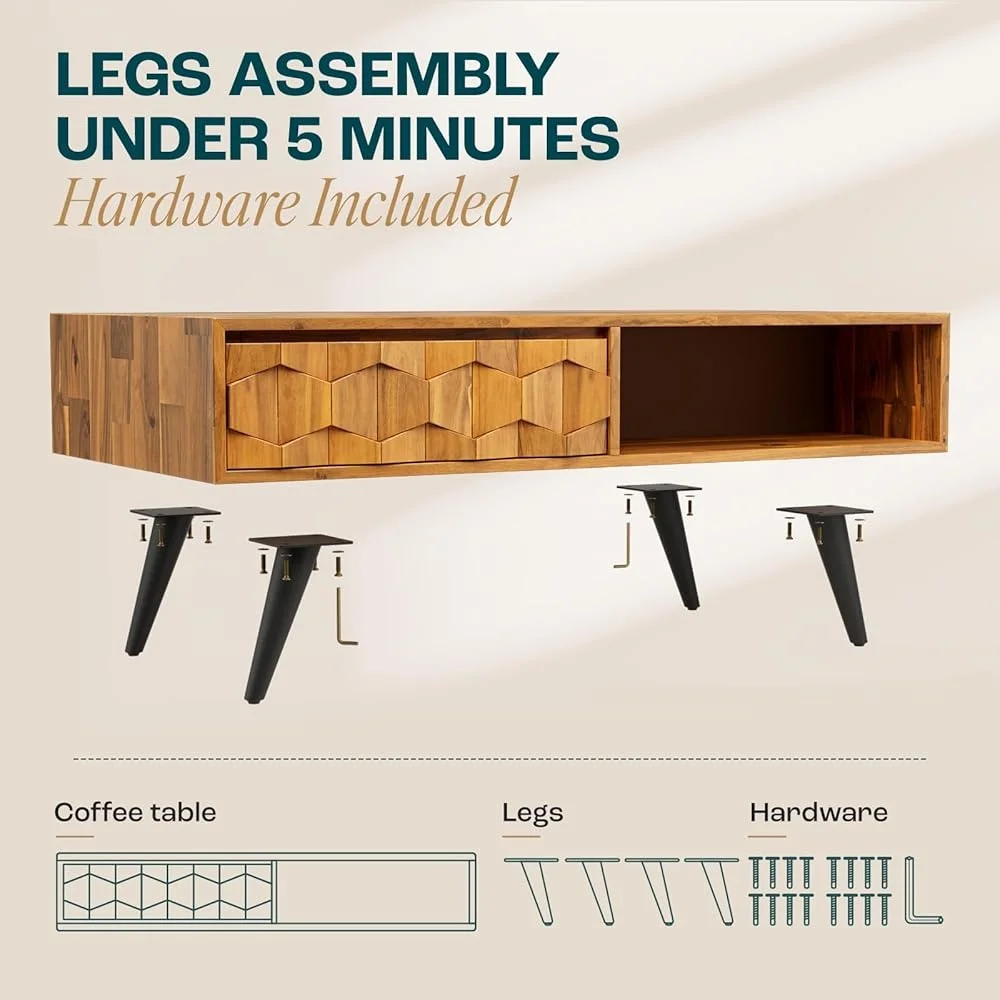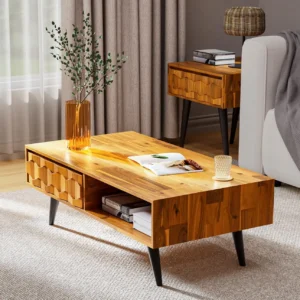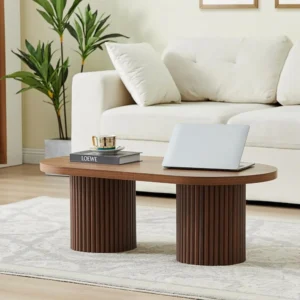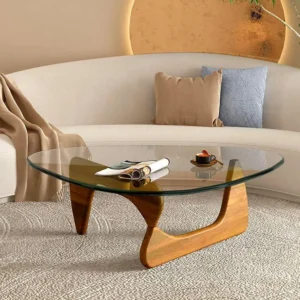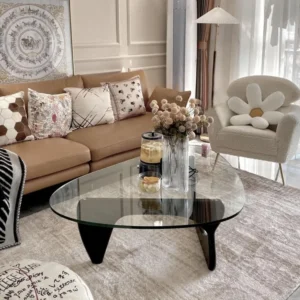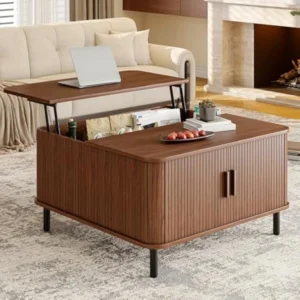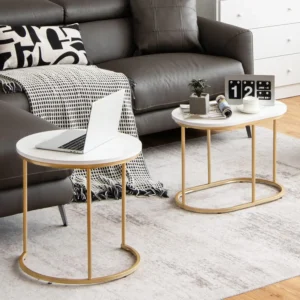Introduction: Why Teak Coffee Tables Stand the Test of Time
Teak coffee tables represent the perfect marriage of function and beauty in home furnishings. This remarkable hardwood, with its distinctive golden-honey appearance, has earned its reputation as one of the most prized materials for quality furniture. What makes teak truly special is its exceptional durability – a quality that allows these tables to become cherished centerpieces in homes for generations.
Unlike many other woods that deteriorate over time, teak contains natural oils that actively resist decay, repel insects, and prevent water damage. This remarkable resilience explains why teak has historically been the material of choice for shipbuilding and premium outdoor furniture before becoming a staple in interior design.
Today, teak coffee tables grace homes across a spectrum of design styles – from sleek mid-century modern spaces to cozy farmhouse interiors. Their versatility stems from teak’s unique ability to be both statement piece and supporting player, depending on the design and setting. Many design enthusiasts appreciate how intelligent black mid-century coffee tables and teak varieties share similar design principles that emphasize clean lines and timeless appeal.
In this comprehensive guide, we’ll explore the diverse world of teak coffee table styles, provide selection guidance based on your space and lifestyle, and share expert maintenance tips to ensure your investment remains beautiful for decades. When chosen thoughtfully, a quality teak coffee table doesn’t just furnish a room – it becomes an heirloom that appreciates in character and often value over time.
At Hearth Forms, we’ve curated exceptional mid-century modern teak coffee tables that exemplify the enduring appeal of this remarkable material.
What Makes Teak the Gold Standard for Coffee Tables
Teak has earned its reputation as the gold standard for premium furniture, particularly coffee tables, thanks to its remarkable natural properties that few other woods can match.
Natural Oil Content and Exceptional Durability
Teak’s secret weapon is its high natural oil content. These oils serve as built-in preservatives that:
– Repel water and prevent warping or cracking
– Discourage insect infestations (including termites)
– Prevent rot and fungal growth
– Maintain structural integrity in varying climates
This natural protection means teak coffee tables require minimal treatment to maintain their beauty, unlike many other woods that demand regular resealing or refinishing.
Dimensional Stability
One of teak’s most valuable qualities for furniture making is its exceptional dimensional stability. With a density significantly higher than oak or maple, quality teak coffee tables:
– Resist warping, even with humidity fluctuations
– Maintain their shape and structural integrity for decades
– Withstand the rigors of daily use without compromising joints or surfaces
The Beautiful Aging Process
Unlike many woods that deteriorate with age, teak undergoes a fascinating transformation over time. When left untreated, its warm golden-honey color gradually develops a distinguished silvery-gray patina. This natural aging process:
– Creates a unique character that many designers and homeowners prize
– Can be prevented with occasional oil applications if the golden tone is preferred
– Represents the living history of your piece
The Sustainability Factor
When sourcing teak coffee tables, sustainability is increasingly important. The best pieces come from:
– Plantation-grown teak with responsible harvesting practices
– Reclaimed sources that give new life to old-growth timber
– Suppliers with verified sustainability certifications
With proper care, a quality teak coffee table can easily last 50+ years, making it not just a purchase but a long-term investment in your home’s beauty and functionality. The versatility of teak allows it to be crafted into countless designs, which we’ll explore in the upcoming sections.
Hearth Forms carefully selects solid wood coffee tables including teak options that demonstrate these superior qualities, ensuring your investment will stand the test of time.
Mid-Century Modern Teak Coffee Tables: Clean Lines and Timeless Appeal
The mid-century modern aesthetic represents perhaps the most iconic and enduring application of teak in coffee table design. Emerging from the 1940s through the 1960s, these pieces continue to captivate design enthusiasts with their perfect balance of form and function.
Defining Elements of Mid-Century Teak Tables
What makes mid-century teak coffee tables immediately recognizable is their distinctive design language:
- Clean, organic lines that feel both geometric and natural
- Tapered or splayed legs that create a sense of lightness
- Minimal ornamentation that lets the wood’s natural beauty shine
- Careful attention to proportion and scale
- Floating tops that appear to hover above the base
- Integrated storage elements like drawers or magazine shelves
These tables emerged during a period when Scandinavian design principles were influencing American furniture makers. Danish and Norwegian designers particularly favored teak for its workability and beautiful grain patterns, establishing it as the signature material of the movement.
The beauty of these pieces lies in their dual nature – they function as practical furniture while simultaneously serving as artistic statements. Many homeowners find that styling their black mid-century coffee table or teak version follows similar principles, creating visual harmony through careful accessorizing.
Design Influence and Contemporary Appeal
Mid-century teak tables often feature thoughtful details that reveal the era’s commitment to craftsmanship:
- Finger-jointed corners displaying precision woodworking
- Sculpted edges that soften the geometric forms
- Book-matched veneer patterns that create visual symmetry
- Hidden hardware that maintains clean visual lines
These tables pair beautifully with other mid-century furniture but also work wonderfully as counterpoints to contemporary pieces. Their enduring popularity stems from their versatile ability to complement various interior styles while maintaining their distinctive character.
Today, authentic vintage mid-century teak coffee tables are highly sought after by collectors, while quality contemporary interpretations continue to be produced for those seeking this iconic style with modern construction standards.
Scandinavian Teak Coffee Tables: Simplicity and Natural Beauty
Scandinavian design philosophy embraces the concept of “hygge” – creating spaces that feel cozy, comfortable, and content through simplicity and connection to nature. Teak coffee tables in this style perfectly embody these principles, bringing natural warmth and functional elegance to living spaces.
The Nordic Design Aesthetic
Scandinavian teak coffee tables are characterized by:
- Lighter finishes that highlight the wood’s natural grain patterns
- Streamlined silhouettes with minimal visual weight
- Emphasis on craftsmanship rather than ornamentation
- Practical storage solutions seamlessly integrated into the design
- Rounded edges and organic forms that feel inviting
- Masterful joinery techniques that showcase woodworking skill
These tables often feature circular or oval shapes that naturally promote conversation and connection – a core value in Scandinavian culture. Unlike some heavier mid-century designs, Scandinavian pieces tend toward an airy lightness that makes them perfect for smaller spaces.
The beauty of Scandinavian teak tables lies in their honest expression of material. The wood’s natural characteristics become the decoration, with subtle variations in grain pattern and color creating visual interest without added embellishment.
Practical Minimalism
Scandinavian design never sacrifices function for form. These coffee tables often incorporate:
- Hidden or integrated storage compartments
- Raised edges to prevent items from sliding off
- Stable bases that ensure security without visual heaviness
- Proportions that work harmoniously with typical seating heights
Our Danish coffee tables collection showcases these principles beautifully, offering pieces that embody authentic Scandinavian design sensibilities.
While these tables may appear simple at first glance, their thoughtful proportions and careful detailing reveal the sophisticated design thinking behind them. This understated elegance allows them to complement a wide range of interior styles, from strictly minimalist to eclectic bohemian spaces.
Industrial Teak Coffee Tables: Raw Materials and Urban Edge
Industrial teak coffee tables represent a compelling fusion of natural warmth and manufactured precision. These designs create a striking contrast between teak’s organic character and the engineered elements of metal, glass, and other industrial materials.
The Urban Industrial Aesthetic
What defines the industrial teak coffee table is its distinctive combination of elements:
- Metal frames (often black iron or steel) supporting teak surfaces
- Exposed hardware that celebrates rather than conceals construction
- Wheels or casters that reference mobility and factory functionality
- Raw or distressed teak finishes that highlight the wood’s natural variation
- Geometric metal bases paired with organic wood tops
- Practical design elements that reference industrial utility
These tables bring an urban edge to living spaces while the teak components add essential warmth that prevents the industrial elements from feeling cold or sterile. The marriage of these contrasting materials creates visual tension that makes these pieces particularly dynamic focal points.
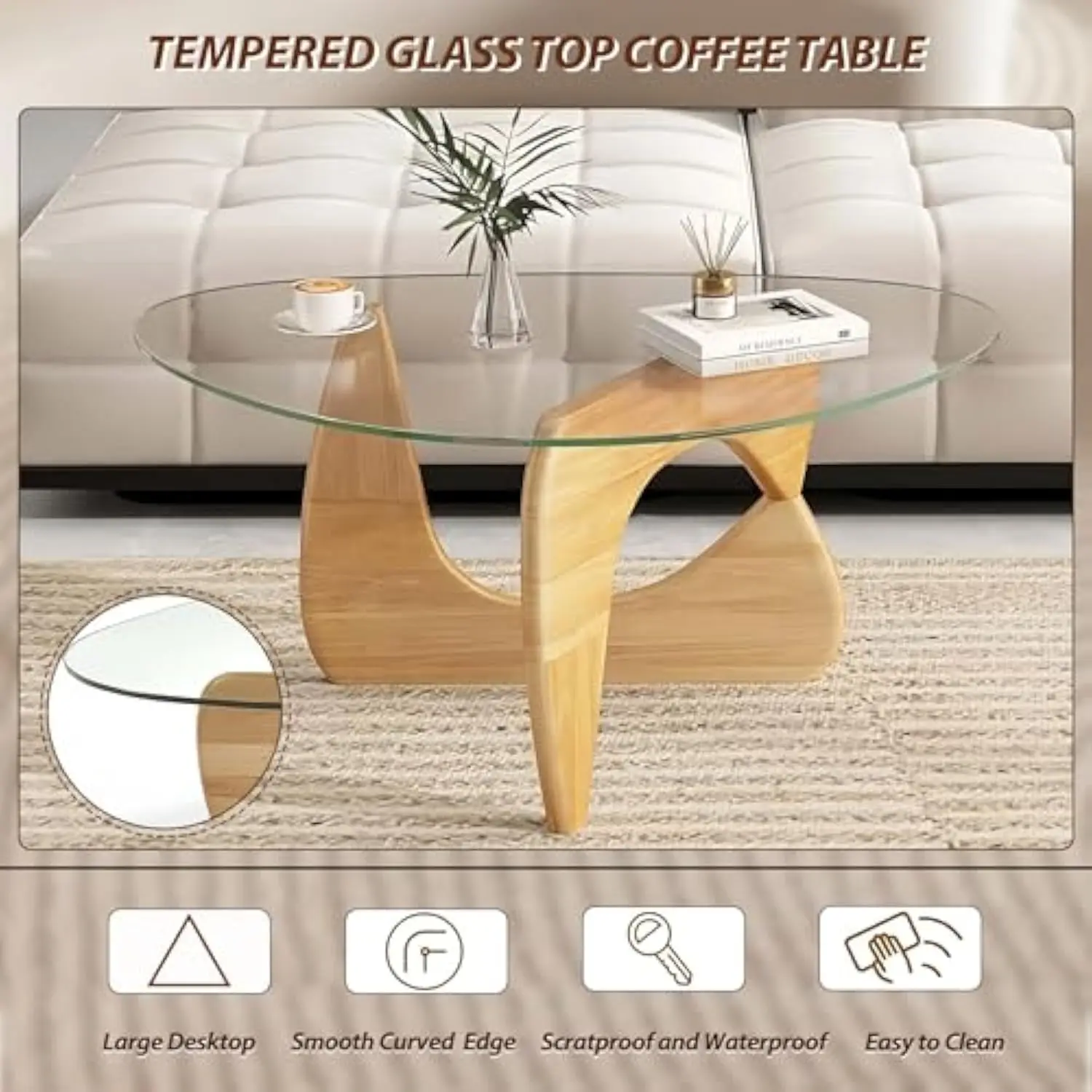
Design Variations and Material Combinations
Industrial teak coffee tables come in several common configurations:
- X-frame or cross-brace metal bases supporting solid teak tops
- Factory-inspired wheeled platforms with teak surfaces
- Metal pipe frameworks with teak shelving elements
- Cage-like structures featuring teak inlays or inserts
- Mixed-material designs incorporating glass top elements with teak and metal components
These tables often incorporate reclaimed or repurposed teak, connecting to both sustainability principles and the industrial ethos of adaptive reuse. The character marks, weathering, and imperfections in reclaimed teak become celebrated design elements rather than flaws.
Industrial teak coffee tables work particularly well in loft apartments, converted industrial spaces, and contemporary homes seeking a touch of urban sophistication. Despite their industrial origins, these versatile pieces complement a surprisingly wide range of interior styles, from strictly modern to eclectic bohemian settings.
Rustic & Farmhouse Teak Coffee Tables: Natural Character and Warmth
Rustic and farmhouse-style teak coffee tables celebrate the natural beauty and organic character of the wood. These designs embrace teak’s inherent variations, creating pieces that feel authentic, inviting, and connected to traditional craftsmanship.
Celebrating Natural Character
What distinguishes rustic teak coffee tables is their emphasis on the wood’s natural qualities:
- Live edges that preserve the tree’s original contours
- Visible knots and grain variations that tell the wood’s story
- Planked tops that showcase traditional construction methods
- Substantial proportions that create a grounding presence
- Hand-finished surfaces that reveal the craftsman’s touch
- Natural color variations that highlight teak’s unique character
These tables often feature more substantial proportions than their modern counterparts, creating a strong anchoring presence in living rooms and family spaces. Their robust construction speaks to durability and longevity – furniture built to serve generations.
Traditional Construction Elements
Farmhouse teak coffee tables frequently incorporate traditional woodworking elements:
- Breadboard ends that prevent warping while adding visual interest
- Turned legs or trestle bases that reference historical furniture forms
- Visible joinery (mortise and tenon, dovetails) that showcases craftsmanship
- Planked tops with intentional spacing that allows for natural wood movement
- Aprons and supports that reinforce the table’s structural integrity
- Distressed or weathered finishes that suggest history and use
These elements connect modern furniture to woodworking traditions that span centuries, creating pieces with a timeless quality that transcends passing trends. The principles used to decorate black mid-century coffee tables can be adapted for rustic teak tables, though with emphasis on organic and traditional accessories.
Rustic teak coffee tables create instant warmth in contemporary spaces that might otherwise feel cold or impersonal. Their natural character brings an authentic element to interiors, connecting modern living to traditional craftsmanship and materials with genuine history and substance.
Contemporary & Modern Teak Coffee Tables: Sleek Innovation
Contemporary and modern teak coffee tables represent the ongoing evolution of design, taking this traditional material in bold new directions. These pieces demonstrate how teak’s timeless qualities can be reimagined for today’s interiors through innovative forms and material combinations.
Distinguishing Contemporary from Modern
While often used interchangeably, contemporary and modern represent different approaches:
- Contemporary designs reflect current trends and aesthetics, constantly evolving
- Modern designs specifically reference the modernist movement with its emphasis on clean lines, minimal ornamentation, and truth to materials
Both approaches share a commitment to pushing boundaries while respecting teak’s inherent properties.
Hallmarks of Contemporary Teak Tables
Today’s contemporary teak coffee tables often feature:
- Architectural lines that create strong geometric statements
- Unexpected shapes that challenge traditional rectangular forms
- Innovative combinations with other materials (glass, metal, stone)
- Cantilevered elements that create visual drama
- Sculptural qualities that blur the line between furniture and art
- Multi-level surfaces that add functional versatility
These tables serve as statement pieces that anchor living spaces while expressing individual style. Their innovative forms don’t sacrifice functionality but rather reimagine how a coffee table can serve modern living patterns.
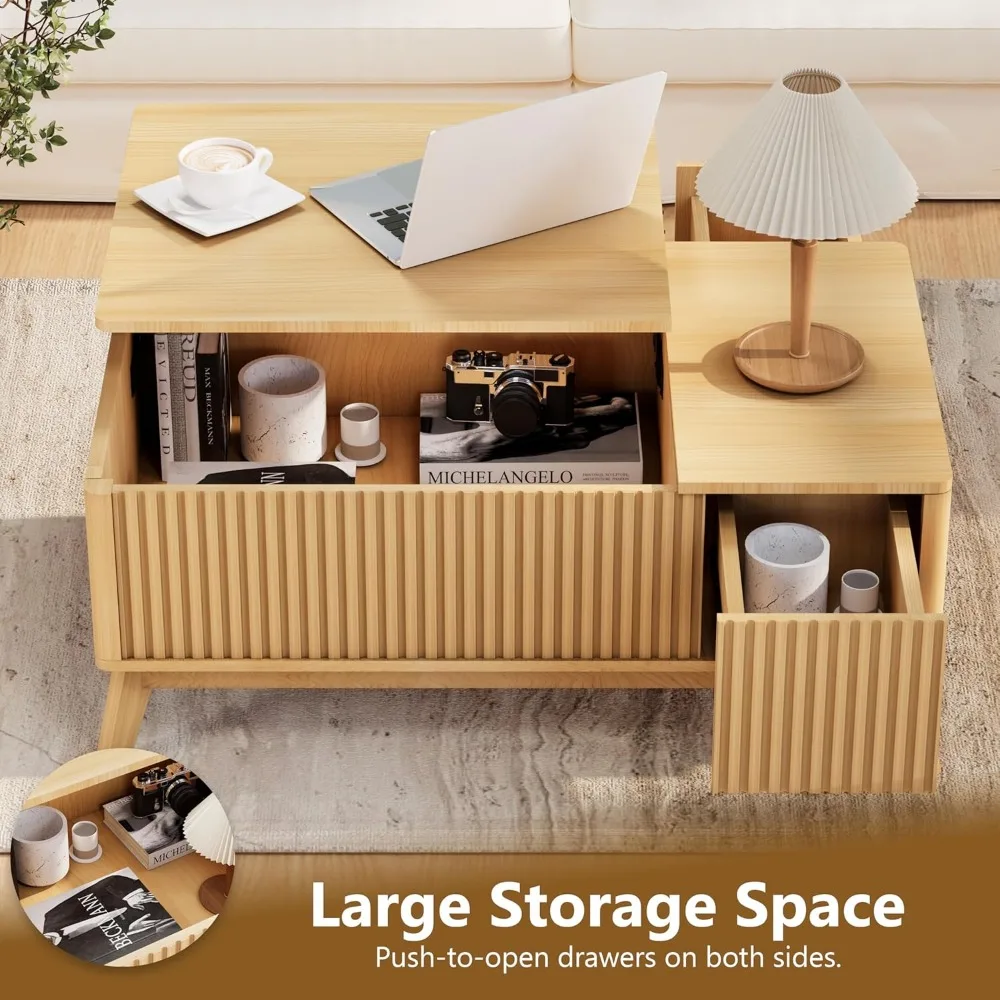
Material Combinations and Functionality
Contemporary teak coffee tables often incorporate:
- Glass elements that create visual lightness and showcase teak bases
- Metal accents that add contrasting texture and color
- Stone or concrete components that introduce additional natural elements
- Lift-top functionality that adapts to modern multi-purpose living
- Built-in technology accommodations for today’s digital lifestyle
- Modular elements that can be reconfigured as needed
These material combinations create visual tension while enhancing functionality for contemporary living. The warmth of teak balances cooler materials like glass and metal, creating compositions that feel both innovative and inviting.
Contemporary teak coffee tables demonstrate that this traditional material continues to inspire new design directions, proving its relevance across generations of furniture design.
Traditional & Colonial Teak Coffee Tables: Refined Elegance
Traditional and colonial-style teak coffee tables connect us to rich design histories spanning continents and centuries. These elegantly formal pieces bring a sense of established sophistication to living spaces through their refined proportions and careful detailing.
Historical Influences and Design Heritage
Traditional teak coffee tables draw from several important historical influences:
- British colonial furniture traditions from India and Southeast Asia
- East Asian design elements, particularly from Indonesia and Thailand
- European classical forms adapted for tropical hardwoods
- Victorian-era craftsmanship with its emphasis on detail and ornamentation
These diverse influences converge in tables that feel formal yet inviting, with a sense of history and permanence that more trend-focused designs often lack.
Distinguishing Characteristics
What sets traditional and colonial teak coffee tables apart:
- Rich, deep finishes that enhance teak’s natural color variations
- Careful attention to proportion and symmetry
- Decorative elements like carved details, fluting, or reeding
- Cabriole legs or other shaped supports with classical references
- Inlaid details or contrasting wood borders
- Storage-focused functionality with drawers and lower shelves
- Substantial presence with defined edges and profiles
These tables often serve as the centerpiece in formal living rooms, libraries, and spaces designed for entertaining. Their refined elegance provides a natural focal point, especially when paired with traditional upholstered seating.
The craftsmanship involved in creating these pieces represents generations of woodworking tradition. Hand-carved details, precisely fitted joinery, and carefully matched grain patterns reflect an approach to furniture making that values patience and skill over production efficiency.
While distinctly traditional, these tables remain surprisingly versatile in contemporary settings, where their classic forms can provide an anchor of permanence amid more transient design elements. Many homeowners appreciate how these pieces connect their living spaces to design traditions with genuine historical depth, as seen in various solid wood coffee table styles.
Coastal & Boho Teak Coffee Tables: Relaxed Natural Beauty
Coastal and bohemian teak coffee tables bring a relaxed, nature-inspired aesthetic to living spaces. These styles celebrate teak’s natural connection to maritime traditions while creating an atmosphere of casual elegance and breezy comfort.
The Casual Coastal Vibe
Coastal teak coffee tables draw direct inspiration from teak’s seafaring heritage:
- Weathered or whitewashed finishes that suggest sun and salt exposure
- Rounded edges and soft profiles that feel naturally shaped
- Plank-style tops that reference dock and deck construction
- Rope, brass, or other nautical accent elements
- Lighter finishes that brighten spaces and reflect natural light
- Simple, unfussy construction that prioritizes function and durability
These tables evoke beachfront living regardless of your actual location. Their relaxed elegance works beautifully in vacation homes but brings that same casual sophistication to year-round residences seeking a more laid-back atmosphere.
Bohemian Interpretations
Boho-style teak coffee tables incorporate additional elements of global influence:
- Organic, irregular edges that celebrate natural forms
- Integration of other natural materials like rattan, wicker, or jute
- Carved details inspired by global design traditions
- Mixed textures that create visual and tactile interest
- Handcrafted elements that showcase artisanal techniques
- Eclectic combinations of traditional and contemporary elements
The bohemian approach celebrates teak’s versatility while incorporating influences from around the world. These tables often become the centerpiece for eclectic living spaces that mix vintage and contemporary pieces with collected treasures.
Both coastal and boho styles connect to sustainable design principles through their frequent use of reclaimed teak. Tables crafted from salvaged boat wood or architectural elements give new life to teak with a genuine history, creating pieces with authentic character and reduced environmental impact.
These relaxed styles continue to grow in popularity as homeowners seek living spaces that feel both personal and inviting. Their casual elegance offers a compelling alternative to more formal or strictly contemporary design approaches.
Teak Root & Organic Coffee Tables: Nature’s Sculptural Art
Teak root coffee tables represent perhaps the most dramatic expression of this remarkable wood’s natural beauty. These extraordinary pieces transform what would typically be discarded—the massive root systems of harvested teak trees—into functional sculptural art for living spaces.
Nature’s Unique Artistry
What makes teak root coffee tables truly special:
- One-of-a-kind organic forms impossible to replicate
- Dramatic three-dimensional shapes that create instant visual impact
- Natural textures ranging from smooth, polished surfaces to rugged, raw edges
- Fascinating negative spaces that play with light and perspective
- The preserved history of the tree’s growth visible in every curve and contour
- Perfect balance between raw natural form and refined functionality
Each table tells the unique story of its source tree’s life, with the complex root structure revealing how it adapted to its environment over decades of growth. This narrative quality creates an immediate conversation piece in any interior.
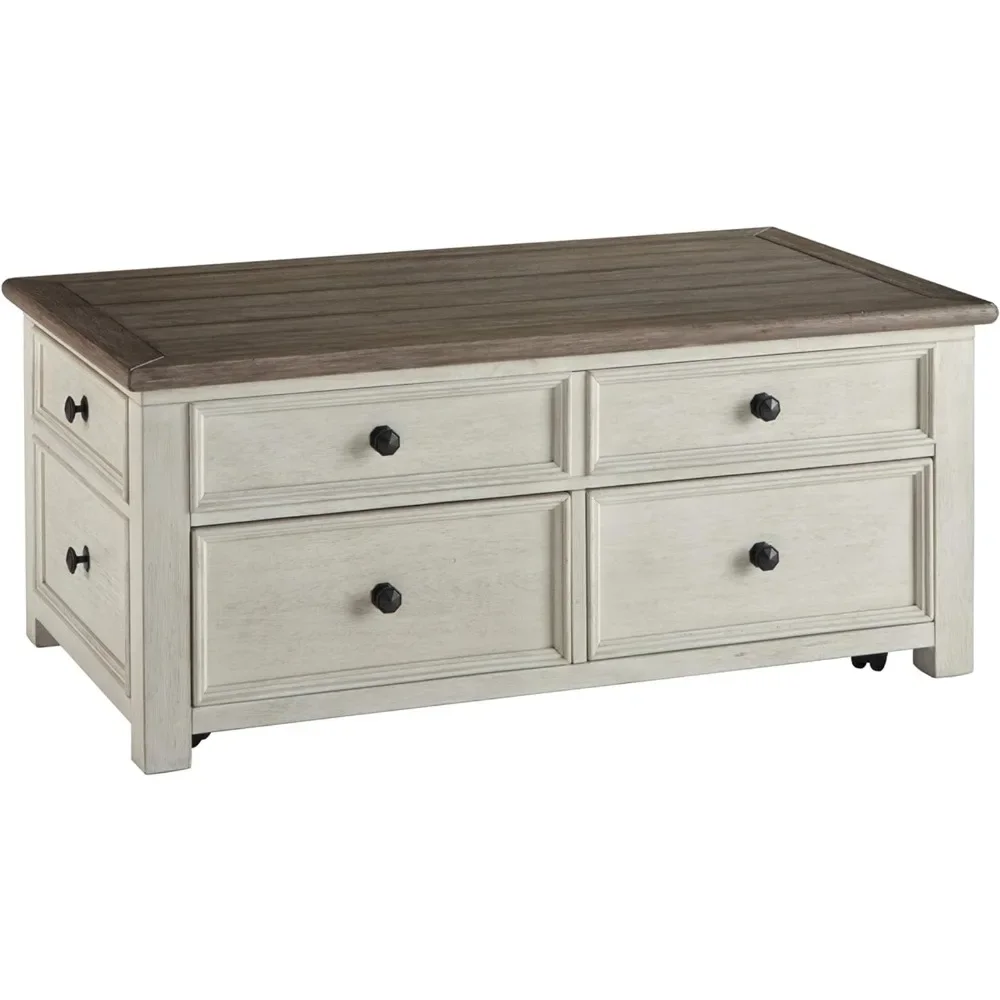
Design Approaches
Teak root coffee tables typically follow one of several design strategies:
- Glass tops that float above the sculptural root base, allowing full visibility
- Flat-cut root slices that create organic table surfaces with dramatic grain patterns
- Polished root forms with minimally altered shapes serving as both base and surface
- Hybrid designs that combine root elements with more structured components
- Integration with other materials (metal, resin) to enhance functionality
These tables represent a fascinating intersection of found object and crafted furniture. Artisans must work with nature’s existing forms rather than imposing predetermined designs, creating a collaborative relationship between natural growth patterns and human intervention.
From a sustainability perspective, teak root tables give purpose to material that would otherwise be wasted. After commercial harvesting of the main trunk, root systems are typically burned or left to decompose. Transforming them into furniture not only creates value but honors the complete life cycle of these magnificent trees.
These organic masterpieces work surprisingly well across diverse interior styles, from minimalist modern spaces to richly layered eclectic rooms. Their natural forms provide a compelling contrast to more structured architectural elements, creating visual tension that energizes living spaces.
For those seeking alternatives with similar organic appeal, walnut coffee table designs often incorporate natural edges and organic forms, though with more restrained expressions than teak root pieces.
Design Elements to Consider When Selecting Your Teak Coffee Table
When navigating the diverse world of teak coffee tables, understanding key design elements helps narrow your options to find the perfect match for your space and needs. Each element contributes significantly to both the visual impact and practical functionality of your table.
Table Shapes and Room Flow
The shape of your coffee table dramatically influences how people move through and use your space:
- Rectangular tables: The classic choice, providing maximum surface area and working well with standard sofas
- Square tables: Create balance in square rooms or when surrounded by multiple seating pieces
- Round tables: Soften spaces with too many straight lines and eliminate sharp corners (ideal for homes with children)
- Oval tables: Combine the flow benefits of round tables with the practical surface area of rectangular designs
- Free-form organic shapes: Make artistic statements while breaking up rigid room layouts
Consider how people navigate around your seating area when selecting a shape. Paths should remain clear with at least 18 inches between the table and seating for comfortable access.
Base Designs and Visual Weight
The base or legs of your teak coffee table significantly impact its perceived weight in the space:
- Pedestal bases: Create a sense of openness underneath, making small rooms feel larger
- Four-corner legs: Provide stability with traditional appeal
- Splayed legs: Add mid-century character while creating visual lightness
- Solid sides: Offer maximum stability and storage potential but increase visual weight
- X-frames or crossbars: Add architectural interest and structural reinforcement
- Floating designs: Create dramatic contemporary statements with cantilevered elements
Consider your flooring when selecting a base. Showcase beautiful rugs or flooring with more open base designs, or use solid sides to conceal storage or less attractive flooring.
Functional Features
Beyond basic surface functionality, consider these enhanced features:
- Storage solutions: Drawers, shelves, or compartments for remote controls, magazines, and everyday items
- Adjustable heights: Mechanisms that raise portions of the tabletop for dining or working
- Nesting designs: Tables that separate into multiple pieces for flexible use
- Convertible features: Pieces that transform to serve multiple functions
Our nesting coffee tables offer particularly versatile solutions for spaces that need adaptable functionality.
Finish Options
Teak coffee table finishes significantly impact both appearance and maintenance requirements:
- Natural oil finishes: Enhance teak’s golden color while allowing it to develop patina over time
- Sealed/lacquered finishes: Provide maximum protection while preserving the initial color
- Whitewashed/limed finishes: Create beachy, casual looks that brighten spaces
- Darker stains: Add drama and formality, complementing traditional interiors
- Raw/untreated surfaces: Allow the most natural aging to silvery gray over time
Each finish option affects not just appearance but maintenance requirements and how the table will evolve over years of use.
Matching Your Space and Lifestyle to the Perfect Teak Coffee Table
Finding your ideal teak coffee table requires aligning your selection with both your living space characteristics and your day-to-day lifestyle needs. This thoughtful matching ensures your table will be both beautiful and practical for years to come.
Room Size Considerations
Your room dimensions should directly inform your coffee table choice:
For smaller spaces (under 200 sq ft):
– Consider round or oval shapes that facilitate movement in tight quarters
– Look for leggy, open designs that create visual spaciousness
– Explore nesting or expandable options that adapt to different needs
– Aim for tables approximately 2/3 the length of your sofa for proper proportion
– Consider height carefully—tables slightly lower than sofa seat height (16-18 inches) feel most comfortable
For larger living rooms:
– Rectangular tables with substantial presence help anchor spacious seating arrangements
– Consider oversized square tables (40”×40” or larger) for expansive seating areas
– Tables with lower shelves help fill vertical space in rooms with high ceilings
– Scale matters—undersized tables look lost in large rooms while oversized pieces obstruct flow in smaller spaces

Lifestyle Factors
Your daily activities and household composition should significantly influence your selection:
For families with young children:
– Prioritize rounded corners and sturdy construction
– Consider distressed or naturally weathered finishes that forgive minor damage
– Look for designs with limited sharp edges or glass components
– Choose pieces with durable, easy-to-clean surfaces
For frequent entertainers:
– Select larger surface areas that accommodate multiple drinks and appetizers
– Consider nesting tables that provide flexible serving space
– Look for designs with spill-resistant finishes or protective glass tops
– Choose tables with sufficient clearance for comfortable leg stretching
For multi-function spaces:
– Explore lift-top designs that transition between coffee and dining heights
– Consider tables with built-in storage to minimize clutter
– Look for mobile pieces with casters if room functions change frequently
– Select surfaces appropriate for your activities (smooth for writing, durable for crafts)
Mid-Century Modern Solid Wood Coffee Tables, Mid-Century Modern Teak Coffee Tables
$879.95 Select options This product has multiple variants. The options may be chosen on the product pageMid-Century Modern Danish Coffee Tables, Mid-Century Modern Oval Coffee Tables, Mid-Century Modern Solid Wood Coffee Tables
$390.05 Select options This product has multiple variants. The options may be chosen on the product pageMid-Century Modern Glass Top Coffee Tables, Mid-Century Modern Glass Top Side & End Tables
$460.58 Select options This product has multiple variants. The options may be chosen on the product pageMid-Century Modern Glass Top Coffee Tables, Mid-Century Modern Vintage Coffee Tables, Mid-Century Modern Vintage Side & End Tables
$725.36 Select options This product has multiple variants. The options may be chosen on the product pageMid-Century Modern Lift Top Coffee Tables, Mid-Century Modern Square Coffee Tables
$454.73 Select options This product has multiple variants. The options may be chosen on the product pageMid-Century Modern Nesting Coffee Tables, Mid-Century Modern Nesting Table Sets
$361.45 Select options This product has multiple variants. The options may be chosen on the product page
Complementing Existing Décor
Your teak coffee table should harmonize with your current furnishings:
With traditional furniture:
– Look for tables with classic proportions and refined details
– Consider pieces with shaped legs, aprons, or traditional joinery
– Choose medium to darker finishes that complement antique wood tones
With contemporary settings:
– Explore cleaner lines and minimal ornamentation
– Consider mixed-material designs that incorporate glass or metal
– Look for distinctive sculptural elements that create visual interest
The process of choosing the perfect coffee table involves balancing these practical considerations with your aesthetic preferences to find a piece that truly enhances your living environment.
Care and Maintenance: Preserving Your Teak Coffee Table’s Beauty
One of teak’s most appealing qualities is its relatively low-maintenance nature compared to other woods. However, proper care ensures your teak coffee table retains its beauty and structural integrity for generations.
Understanding Teak’s Natural Aging Process
Teak undergoes a natural transformation over time that’s important to understand:
- New teak typically displays a golden-honey color with varied grain patterns
- Without treatment, teak naturally weathers to a silvery-gray patina over 6-12 months indoors (faster in outdoor settings)
- This patina is not damage but a natural protective surface that many consider beautiful
- The aging process can be slowed or prevented with regular oil applications
- Once patina develops, you can either embrace it or restore the original color through light sanding and oiling
Whether you prefer the fresh golden tone or the distinguished silvery patina is entirely personal preference—both represent teak’s natural beauty at different life stages.
Routine Care Guidelines
For day-to-day maintenance of indoor teak coffee tables:
- Dust regularly with a soft, dry cloth following the wood grain
- Clean spills promptly with a slightly damp cloth, then dry immediately
- Use coasters under drinks to prevent water rings
- Apply table linens under hot dishes to prevent heat marks
- Avoid commercial polishes containing silicone, which can build up over time
- Keep tables out of direct sunlight to prevent uneven fading
- Maintain consistent humidity levels when possible to prevent wood movement
For deeper cleaning when necessary:
- Use mild soap diluted in warm water with a soft cloth
- Clean with the grain, not in circles or against it
- Rinse with a clean damp cloth to remove soap residue
- Dry thoroughly with a soft cloth
- Consider applying teak oil after cleaning if the surface appears dry
Dealing with Common Issues
For specific problems that may arise:
Water marks or rings:
– For fresh marks, try rubbing with a dry cloth
– For persistent rings, make a paste of baking soda and water, apply gently, then wipe clean
– Very stubborn marks may require light sanding followed by oil application
Scratches:
– Minor scratches often respond well to rubbing with teak oil
– Deeper scratches may require fine sandpaper followed by oil restoration
– Match the surrounding finish when applying new oil
Oil and refinishing:
– Apply specialized teak oil (not Danish oil) with a soft cloth every 6-12 months
– Allow oil to penetrate for 15-20 minutes, then wipe away excess
– Build up multiple thin coats rather than one heavy application
– Always test products on an inconspicuous area first
With proper care, your teak coffee table will continue to be a beautiful focal point in your home while developing the rich character that only comes with time and use.
Frequently Asked Questions About Teak Coffee Tables
How durable is teak for everyday use?
Teak is exceptionally durable for daily use in busy households. Its natural oils resist water damage, prevent warping, and discourage insect infestation. A quality teak coffee table can withstand hot cups, spills, and daily use better than most other woods. With minimal care, teak furniture regularly lasts for generations, making it ideal for high-traffic living areas where furniture faces constant use.
Can teak coffee tables be used outdoors?
Yes, teak is one of the few woods naturally suited for outdoor use. Its high oil content makes it exceptionally weather-resistant, allowing it to withstand rain, sun, and temperature fluctuations without deteriorating. While indoor teak tables can certainly be used outdoors, tables specifically designed for outdoor use often feature additional weather-resistant construction techniques for enhanced durability in exposed conditions.
Will my teak coffee table change color over time?
Yes, untreated teak naturally changes from a golden-honey color to a distinguished silvery-gray patina over time. This process happens gradually indoors, usually taking 6-12 months depending on exposure to light and air. This patina is not damage but rather teak’s natural protective surface. If you prefer maintaining the original golden color, regular applications of teak oil (every 3-6 months) will preserve it.
What’s the difference between solid teak and teak veneer?
Solid teak coffee tables are constructed entirely from teak wood, offering maximum durability and the ability to be refinished multiple times over their lifespan. Teak veneer consists of a thin layer of genuine teak applied over a substrate like plywood or MDF. While veneer tables are more affordable and still showcase real teak grain, they cannot be deeply sanded or refinished and generally have shorter lifespans than solid teak. Quality veneer tables can still last decades with proper care.
How can I tell if a teak coffee table is high quality?
High-quality teak coffee tables demonstrate several indicators:
– The wood has a consistent golden-brown color with tight, straight grain patterns
– Joints fit precisely with no visible gaps
– The piece feels substantial and solid when moved
– Drawer components slide smoothly with proper stops
– Surfaces are uniformly smooth with consistent finish
– The wood has a slightly oily feel when rubbed
– Construction uses traditional joinery rather than just screws and glue
Are teak coffee tables worth the investment?
Teak coffee tables typically command premium prices compared to tables made from other woods, but their exceptional longevity makes them cost-effective over time. A quality teak table can last generations with minimal maintenance, while less expensive tables might need replacement every 5-10 years. Additionally, teak’s timeless appeal means it rarely goes out of style, and its natural beauty enhances various interior designs. For those seeking furniture as a long-term investment, teak represents excellent value despite the higher initial cost.
Making Your Selection: Finding Your Perfect Teak Coffee Table
As we’ve explored throughout this guide, teak coffee tables offer remarkable versatility across a spectrum of design styles, from mid-century modern classics to contemporary innovations. Each style brings its own distinctive character while showcasing teak’s inherent beauty and exceptional durability.
When selecting your perfect teak coffee table, consider how different styles align with both your aesthetic preferences and practical needs. Mid-century and Scandinavian designs offer clean simplicity that complements modern interiors. Industrial and contemporary styles make bold statements while incorporating mixed materials. Rustic and traditional tables bring warmth and timeless elegance, while organic teak root pieces create truly unique artistic expressions.
Beyond style, remember to evaluate practical elements like appropriate sizing, functional features, and maintenance requirements that match your lifestyle. The perfect table should not only look beautiful in your space but serve your daily needs effortlessly.
Teak’s remarkable longevity means your coffee table can become more than just furniture—it becomes a lasting element of your home that develops character and history alongside your family. Unlike trendy pieces that quickly feel dated, quality teak tables maintain their relevance and beauty across changing design eras.
At Hearth Forms, we understand that selecting the right teak coffee table represents an important investment in your home’s comfort and beauty. Each piece in our collection has been thoughtfully selected to represent the finest examples of teak craftsmanship across diverse design styles. We invite you to explore these options with the knowledge that a well-chosen teak coffee table will provide decades of beauty and function in your living space.

